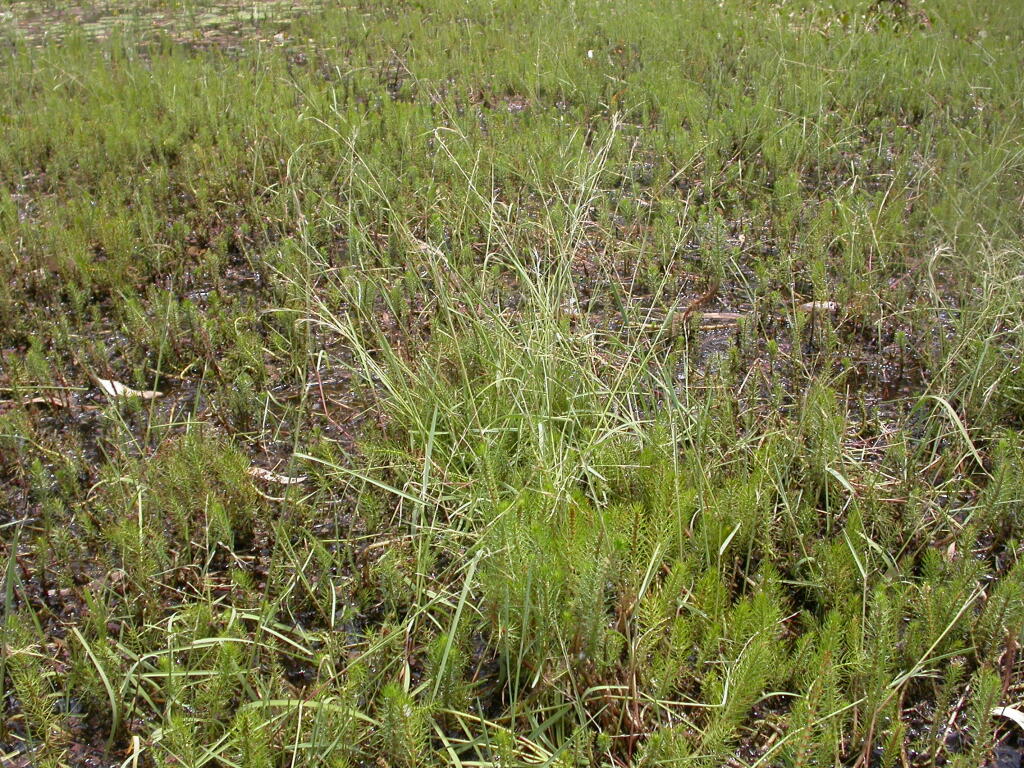Amphibromus fluitans
KirkRhizomatous and stoloniferous aquatic or semi-aquatic perennial; culms decumbent (at least when growing in water), sometimes only the inflorescence emergent, to 80 cm high overall. Leaves glabrous, scabrous; blade flat, to 25 cm long and 2–5 mm wide; ligule acute, (3.5–)6.5–12 mm long. Inflorescence to 35 cm long. Spikelets (6.5–)9–15 mm long, 5–12-flowered, lower glume (2–)2.7–3.7 mm long, upper glume (2.5–)3.4–4.5 mm long; lemma 3.7–5 mm long, scabrous to hispid, apical teeth 2, 0.3–0.6 mm long; awn 9–17 mm long, inserted 30–60% of the lemma length from the apex, column and bristle not distinguished; palea from one-quarter to three-quarters as long as lemma. Flowers Nov.–Mar.
Wim, GleP, VVP, VRiv, MuF, GipP, OtP, Gold, CVU, GGr, DunT, NIS, HSF, HNF, Strz, VAlp. Also NSW, Tas. Largely confined to permanent swamps, principally along the Murray River between Wodonga and Echuca, uncommon to rare in the south (e.g. Casterton, Moe, Yarram), probably due to historic drainage of wetlands.
Sometimes forming loose turf-like colonies at the edge of receding waters and then spikelets tend to be smaller than typical (represented by the bracketed values in the above description).
Walsh, N.G. (1994). Poaceae. In: Walsh, N.G.; Entwisle, T.J., Flora of Victoria Vol. 2, Ferns and Allied Plants, Conifers and Monocotyledons, pp. 356–627. Inkata Press, Melbourne.
 Spinning
Spinning



